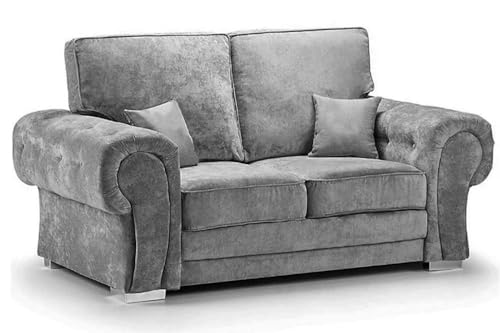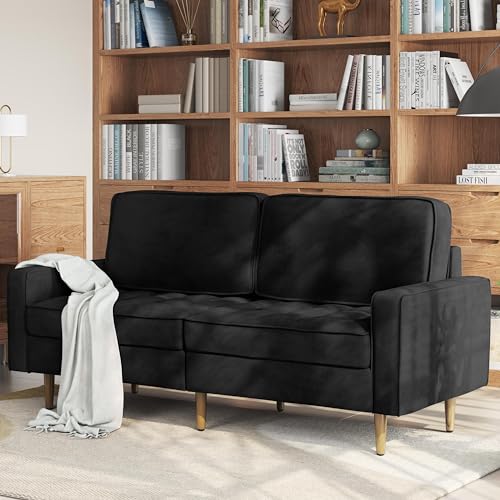Guide To 2 Seater Leather And Fabric Sofa: The Intermediate Guide Towa…
페이지 정보
작성자 Dorothea Bronne… 작성일 24-10-26 14:57 조회 9 댓글 0본문
 Choosing Between a 2 Seater Leather and Fabric Sofa
Choosing Between a 2 Seater Leather and Fabric Sofa If you're shopping for a new sofa it can be tricky to choose between fabric or leather. This is especially the case if you're not a professional with furniture experience.
If you're shopping for a new sofa it can be tricky to choose between fabric or leather. This is especially the case if you're not a professional with furniture experience.If you have kids or live in an apartment, the leather option may be the best choice for you. It's easy to wipe down and looks fantastic in a lot of homes.
Comfort
A sofa is the focal feature of many people's living spaces and is a significant purchase. You want a sofa that is comfortable to lounge on for a long time and looks good, is in line to your style and can stand the test of time. Making a decision between leather and fabric two seater sofa can be confusing However, it is essential to evaluate your needs, lifestyle and budget before making a decision.
Leather is a premium material with a luxurious feel and is elegant in the home. It is durable and stain-resistant, it is safe for pets and children, and can last for a long time if properly cared for. It can be expensive in the beginning and may require regular conditioning to prevent cracks or peeling.
2 seater fabric couch sofas are available in a variety of styles, colors and fabrics. They can be an affordable alternative to a leather one. They are also softer and more cosy, and can be "broken into" right from the beginning. They could be more vulnerable to dust mites or hairs from pets and require more frequent cleaning. There are now hypoallergenic fabrics as well as new technologies available.
The life-span of a sofa made of fabric will depend on the quality of the material however, most fabrics will last for 15 years if properly cared for. Regular vacuuming and deep cleaning will ensure that the fabric is free of odours, stains and dirt. They can also shrink and flatten over time, just like leather. In addition, a lot of fabric couches have been treated with chemicals to make them stain-resistant as well as flame retardant. They can release volatile organic compounds that could alter indoor air quality and cause allergies.
Durability
When buying sofas, we often select fabrics that are extremely robust, which is crucial if you have pets and children. You don't have to spend a lot of money in the beginning in case you'll regret it after the very first smudge or claw. In the same way you shouldn't purchase a product that isn't expensive but isn't durable enough for everyday use.
Leather is also extremely durable and has a remarkable tear strength. It can last up to four times longer than 2 seater fabric tub sofa and is naturally resistant to cracking, fade and flaking over time. It can also be treated to restore its natural oils and look as fresh as new.
Fabrics are a cheaper option and come in a variety of colours, patterns, and textures to fit any design. Fabrics are less difficult to clean and can endure some wear and tear. However, they can fade with time and are more susceptible to moisture.
Microfiber is a good choice for durability and comes in a wide variety of colors, but it's not as strong as genuine leather and might not be able to take the punishment of scratches. It is still a great choice for families because of its resistance to stains and spills. It's also simple to clean with an aqueous cloth.
Suede On the other hand is a struggle to clean and may be even more difficult to repair than leather. It also can lose its shape if it is not regularly cleaned and may feel rough to the touch. It is also a very thin material, so it might not be as tough as sheepskin or cowhide.
Allergens
The fabric your sofa is made from can have a major impact on your allergies, which is why it's important to know the different ways to treat. Fabrics tend to store allergens such as dust mites, pet dander, and mold that can cause symptoms of hay fever, rhinitis, eczema and asthma. This is because they create the perfect environment for them to fester.
Leather on the other hand isn't susceptible to the accumulation of allergens and provides constant comfort regardless of the season. However, it can cause skin irritation, especially in those who suffer from contact dermatitis and who are sensitive to the chemicals used in tanning. Utilizing vegetable-tanned leather and ensuring regular skincare routines are essential for mitigating skin reactions.
Both leather and fabric sofas are durable, but the material you choose will have a major impact on how well your couch holds up to wear. A high-quality material will resist shrinking or fading and can stand up to spills, body oils and daily use. Modern sofas have stain-resistant treatment options which make cleaning up easy.
Although you may not be able to completely prevent an allergic reaction from the leather on your sofa, it is possible to avoid allergens by keeping a lint roller nearby and regularly cleaning your living space. This will help in reducing the amount of dirt, pet hair and dust mites that build up on your sofa. If you're still experiencing allergies, consider replacing your sofa with a allergy-friendly model. For example, a leather sofa made from vinyl or synthetic leather is less likely to collect dust mites and pet dander and will allow you to breathe easier.
Scratches
It is crucial to think about the amount of wear and tear you can expect a leather couch to endure. The finish, color and quality of the leather are crucial factors in the length of time a sofa will last. You also want to make sure that it is strong enough to withstand spills and other messes. This can be done by choosing a couch that has a hardwood frame and high-density foam cushions.
Leather can be damaged for many reasons, like stretching, marking territory or recovering the stress. Scratches vary in severity. They vary from minor surface scratches, to deep cuts or punctures. Minor scratches can be repaired by applying a conditioner for leather to the area affected. This will help to restore the balance of moisture and oil in the leather, which will prevent drying out and cracking. Deep scratches and cut might require a different treatment based on the severity of damage.
If you have pets, it's recommended to trim their nails regularly as this can assist in stopping scratching on your couch. You can also retrain the scratching behavior by providing them with scratching surfaces, such as sisal rope or cardboard. Another option is to use a pet-safe furniture polish, which can be applied with soft cloths to the affected area.
In addition to cleaning your leather sofa regularly, it is also recommended to keep it from direct sunlight and heat sources which can dry out the leather. This could cause it to split and is often difficult to repair and frequently requires reupholstery. It is recommended to use a conditioner for leather to keep the leather supple.
Smell
A leather couch tends to have a slightly different smell than 2 seat fabric sofa. This is because it's more porous and will absorb unwanted odors such as smoke, body odor or food quite easily. The good news is, the smells typically disappear over time, especially when you use a non-toxic, fragrance-free cleaner.
If the smell is very overpowering it could mean that there's something wrong with the foam. This is usually caused by chemical off-gassing from petroleum-based polyurethane. If you're concerned about this, consider couches made with CertiPUR-US certified or natural latex foams.
Another method to detect fake leather is to look for bumps or texture on the back of the sofa. This is a sign that the leather is not authentic top grain. You can also conduct an inspection of the interior by tiling the couch on its side to see if it's possible to see any visible upholstery backing. If you smell it, then it's likely a synthetic material like polyester or polyurethane. These types of materials are likely to have a different smell than leather.
A leather sofa is more susceptible to picking up smells, the best way to avoid this is to regularly clean your sofa. This keeps it looking good and fresh and also prevent it from becoming stiff or cracked over the years. Begin by vacuuming and dusting your couch and then wiping it clean with a dry cloth and baking soda (a great natural method to remove odors). You should do this at least once every two weeks or more in order to get rid of dust and dirt build up. Apply leather conditioner to maintain the texture and color of your sofa.
댓글목록 0
등록된 댓글이 없습니다.

